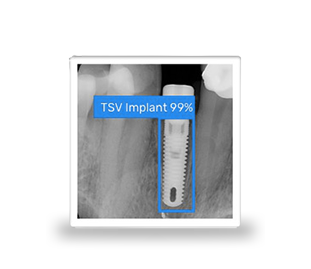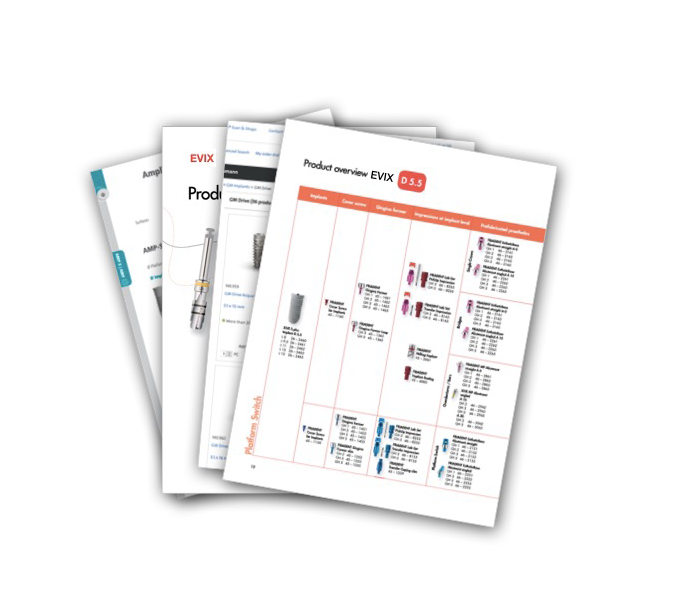Dental Implant Abutments: an Overview of the Most Common Designs
What are the different kinds of abutments? (Part 1)Feb. 19, 2021
The purpose of this article (part 1) is to highlight the different dental abutment types that manufacturers provide to practitioners when they need to restore an implant. Whether they are cataloged, customized, or hybrid abutments, the goal is to compare the pros and cons of each type and make an informed decision before undergoing any type of procedure. In recent years, the literature has shown that although all implant abutments have been evaluated as esthetically efficient, hybrid implants are preferred by professionals and are being more solicited than other types (Vetromilla et al., 2019).
In this first part, it is important to note that the most important components of an abutment are the connection and the transgingival part. They ensure a proper fit to the implant and maintain the soft tissue around the implant. Moving forward in this analysis, the article aims to list the strengths and weaknesses of each implant abutment type.
Prefabricated/Stock Abutments:

This type of abutment offers multiple advantages, the first one being cost. Having already chosen a material and adopting specific sizes, the price is not as high as the other types and the product is easily distributed. Moreover, it has been proven to have the best application in the posterior area of the mouth since it is not a critical location. However, prefabricated abutments also come with disadvantages. The most important one being the lessened stability of the soft tissues in the anterior area (Lops et al., 2014). Moreover, these abutments should not be used for cement-retained prostheses. Excess cement can cause biological problems (Linkevičius, 2013).
In order to control the profile of the transgingival zone, customized abutments have been designed.
Customized Abutments:
The goal of customized abutments is to achieve precision and thus to adapt to the morphology of the soft tissues in order to obtain the best result. There are two main types of personalized abutments that are represented:
Custom Titanium Abutments:

To begin with, literature has shown that Titanium abutments have a high resistance to fracture and ensure a good soft tissue stability overall. Since they are manufactured to fit perfectly the architecture of the patient’s gingival architecture, it is easier to fix the angulation of the abutment (Foong et al., 2013). This enables appointments to be less frequent and more efficient in the long term. However, this treatment will be more costly and might deteriorate the esthetic appeal of the implant, especially when the tissue is thin, since the color of the titanium might shine through the gingival margin (Lantigua, 2018).
Custom Zirconia Abutments:

The soft tissue adhesion and stability properties of zirconia are comparable to those of titanium; moreover, the most positive impact of custom zirconia abutments is esthetics due to the material (Lantigua, 2018). However, zirconia can wear down the titanium neck of the implant, making it less safe for the patient and the implant less durable (Klotz, 2011 and Cavusoglu, 2014)
The advantages and disadvantages of customized titanium and zirconium oxide abutments made it possible to consider a new solution: Hybrid Abutments.
Titanium Base Abutment (hybrid abutments) :

These abutments are an association between a titanium base machined by the manufacturer and an abutment framework manufactured by the laboratory. These elements will be assembled by bonding in the laboratory according to a strict protocol.
When looking at their strengths, they are just as stable and as resistant as of a titanium abutment. They are less costly and can be personalized with the laboratory that is at proximity even though the connexion is itself fabricated by the manufacturer.
However, working on the spot with fabricants can create disponibility issues that might delay the work and reduce efficiency for the practitioner (Linkevicius et al., 2018).
In our next post on Abutments - Part 2, there will be a special focus on the more advanced techniques.
References:
- Cavusoglu, Y., Akça, K., Gürbüz, R., & Cavit Cehreli, M. (2014). A Pilot Study of Joint Stability at the Zirconium or Titanium Abutment/Titanium Implant Interface. The International Journal of Oral & Maxillofacial Implants, 29(2), 338–343. https://doi.org/10.11607/jomi.3116
- Foong, J. K. W., Judge, R. B., Palamara, J. E., & Swain, M. V. (2013). Fracture resistance of titanium and zirconia abutments: an in vitro study. The Journal of Prosthetic Dentistry, 109(5), 304–312. https://doi.org/10.1016/S0022-3913(13)60306-6
- Linkevicius, T., Linkevicius, R., Alkimavicius, J., Linkeviciene, L., Andrijauskas, P., & Puisys, A. (2018). Influence of titanium base, lithium disilicate restoration and vertical soft tissue thickness on bone stability around triangular-shaped implants: A prospective clinical trial. Clinical Oral Implants Research, 29(7), 716–724. https://doi.org/10.1111/clr.13263
- Linkevicius, T., Vindasiute, E., Puisys, A., Linkeviciene, L., Maslova, N., & Puriene, A. (2012). The influence of the cementation margin position on the amount of undetected cement. A prospective clinical study. Clinical Oral Implants Research, 24(1), 71–76. https://doi.org/10.1111/j.1600-0501.2012.02453.x
- Lops, D., Bressan, E., Parpaiola, A., Sbricoli, L., Cecchinato, D., & Romeo, E. (2014). Soft tissues stability of cad-cam and stock abutments in anterior regions: 2-year prospective multicentric cohort study. Clinical Oral Implants Research, 26(12), 1436–1442. https://doi.org/10.1111/clr.12479
- Nascimento, C. do, Pita, M. S., Fernandes, F. H. N. C., Pedrazzi, V., de Albuquerque Junior, R. F., & Ribeiro, R. F. (2013). Bacterial adhesion on the titanium and zirconia abutment surfaces. Clinical Oral Implants Research, 25(3), 337–343. https://doi.org/10.1111/clr.12093
- Stimmelmayr, M., Edelhoff, D., Güth, J.-F., Erdelt, K., Happe, A., & Beuer, F. (2012). Wear at the titanium–titanium and the titanium–zirconia implant–abutment interface: A comparative in vitro study. Dental Materials, 28(12), 1215–1220. https://doi.org/10.1016/j.dental.2012.08.008
- UFO Themes. (2015, January 3). 5: Prefabricated Implant Abutments. Pocket Dentistry. https://pocketdentistry.com/5-prefabricated-implant-abutments/
- Vetromilla, B. M., Brondani, L. P., Pereira-Cenci, T., & Bergoli, C. D. (2019). Influence of different implant-abutment connection designs on the mechanical and biological behavior of single-tooth implants in the maxillary esthetic zone: A systematic review. The Journal of Prosthetic Dentistry, 121(3), 398-403.e3. https://doi.org/10.1016/j.prosdent.2018.05.007



